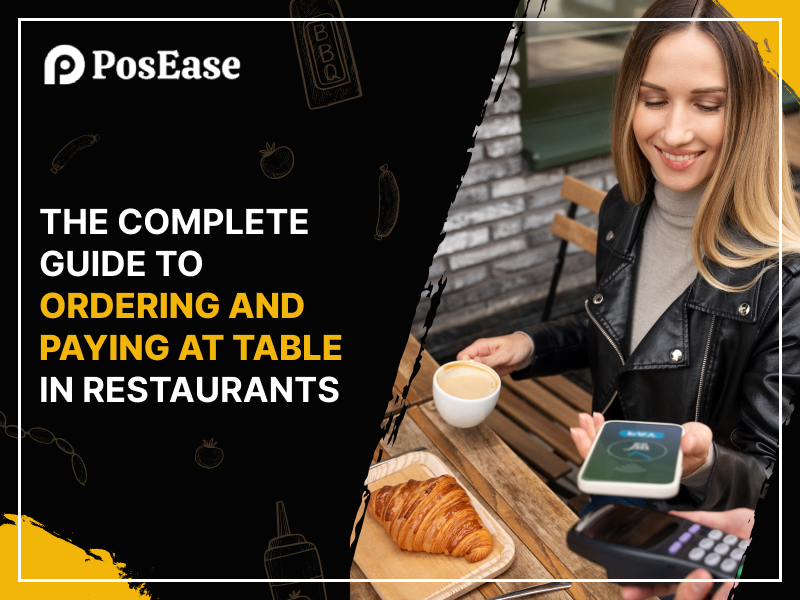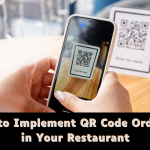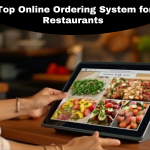The Complete Guide to Ordering and Paying at Table in Restaurants

The pandemic struck the restaurants; they had to change their operations in a matter of hours and quickly adapt to new technologies like payment via contactless and delivery integrations. After having survived waves after waves of the epidemic and having to adjust over the course of a few days to restrictions and lockdowns, restaurant owners are confronted with an entirely new set of issues: labour shortages and record inflation, astronomically high prices for food, and the changing of consumer behaviour and expectations
Fortunately, the technology that helped restaurants survive the pandemic can help them thrive despite the new issues facing the industry. Contactless, tableside ordering, and payments allow you to serve a greater number of guests faster and more effectively while requiring fewer employees.
Continue reading to learn all you should be aware of about payment and tableside ordering and how you can implement them at your restaurant.
What is tableside ordering?
Tableside ordering refers to the process of ordering and paying for their drinks and food at their table rather than at a central counter, with the assistance of a server equipped with a handheld device or using their own mobile devices. Tableside ordering is typically used in restaurants that are sit-down and range from fine dining to pubs and bars, but it’s also becoming more popular in fast-service establishments to manage long queues.
Tableside ordering accelerates the service process because customers don’t need to wait in lines. They might not even need to wait for the server to take their order when it’s using QR codes. Customers also find it easier, as they can place orders and pay for their meals and drinks without stepping up.
What is a tableside-ordering system?
Tableside ordering systems are an innovative technology that simplifies the process of placing orders and making payments. There are several ways in which tableside ordering can be implemented in restaurants:
1. The QR code system for orders
2. Handheld POS system
3. Self-service kiosks
Through a tableside order system, guests or servers can make an order and send it off to the kitchen, where it will be prepared as well. They may pay the bill in a matter of seconds if the owner or restaurant allows table-side payment choices.
Restaurants can opt to include table-side ordering and payment capabilities by simply ordering or making payments according to their preferences and the workflows they prefer.
What are tableside cash payments?
Tableside payments refer to the process of making a payment on the table of the customer. It is usually servers who bring an electronic device that is placed at the table, in contrast to obtaining the cards and taking them back to the central point of sale (POS) to settle the bill. Tableside ordering systems typically feature tableside ordering as well as payment functions, but the term tableside payments” could simply refer to a restaurant that is equipped with mobile payment terminals.
If you’re already in place for tableside orders but you’re not able to accept payments, this feature can allow you to improve the ordering and payment process to the next level and also greatly enhance the experience for guests. To enable tableside payment, you’ll need an electronic device that can be used as a mobile payment terminal or a portable POS system (“handheld EPOS”).
The most commonly used kinds of tableside order in restaurant systems
Although self-service kiosks are available in a few establishments, the equipment required for this type of system can be very expensive. That’s why they’re mostly used in large food chains such as McDonald’s. Because of this and many other reasons, the QR code ordering system as well as portable POS systems are more popular and affordable tableside ordering systems.
Systems for ordering QR codes
When ordering using QR codes, clients scan QR codes using their mobile devices and are able to access the menu’s digital version on their phone. The menu allows users to browse or order food and pay with only their phone.
With the latest QR codes for ordering, such as Order Anywhere, guests can even pay for the cost using various payment methods.
Handheld System for POS
Another option to incorporate table-side ordering into your restaurant’s operations is to provide servers with an electronic POS that is also known as the mobile point-of-sale (mPOS) method. A handheld POS device lets your staff members carry the POS and payment system inside their pockets or an apron.
Instead of writing down orders on paper or trying to recall orders in their heads, servers can accept orders and then punch them in, take contactless or physical payment via card, and send email receipts to customers, all without having to leave the table. Orders are sent straight to kitchens, so they can begin the preparation process.
Integrating handheld POS devices into your business will significantly cut down on wait intervals for guests, boost the accuracy of orders, and provide waiters with access to your menus as well as crucial information right at their fingertips. This means that you will not spend lengthy time going back and forth with the kitchen team about the possibility that a particular dish is made with a particular food ingredient or possibly an allergen. (Hallelujah!)
By increasing the speed of the ordering and payment process, servers will have more time to concentrate on delivering a fantastic customer experience, serving food out to tables when they’re still hot, cleaning tables, returning glassware at the bar, and a myriad of other tasks that ensure your restaurant is running efficiently.
Tableside ordering features are built into the technology, like “suggested items” as well as pop-up prompts and reminders to servers to sell more items with every order, allowing you to boost sales even with fewer employees.
The top 10 advantages of tableside ordering for dining establishments
There are plenty of advantages to using table-side ordering within your dining establishment. This is what restaurants can achieve by implementing a tableside ordering system:
1. Serve more guests with the help of fewer employees.
2. Increase efficiency by preventing your employees from having to run between the POS.
3. Profits can be increased through upsells and order processing in real-time.
4. Reduce operating costs through flexible order systems.
5. Improve the accuracy of orders and improve communication between kitchens.
6. Enhance the customer experience by providing speedier service.
7. Stay on top of evolving customer behaviour.
8. Improve staff satisfaction and retention by increasing tips.
9. Enhance security by storing payments in plain view.
10. Gather valuable marketing information by obtaining guest details right from the table.
What is the best tableside ordering system?
You’ve got many reasons why you should incorporate the technology of tableside ordering in your restaurant. Let’s now discuss how to select the most appropriate tableside ordering method to suit your needs. Here’s how, in just five steps:
1. Explore your choices.
The first step is to decide on which ordering systems for tables you’re most interested in. Do you prefer the QR order system that uses a code, a handheld POS system, or both? Utilizing both systems in conjunction will really propel your sales and customer service into hyperdrive; however, there’s no obligation to choose between them or both simultaneously. You may begin with the one you think is most efficient and simple to implement, and then include the second one if and only if it is a good fit for you.
2. Decide on the way you’d like to let your customers place an order and pay for it.
Do you want to permit customers to pay and place orders on the table? Or just browse through a menu online? Or browse and order, and then settle the bill by using servers? Each of these options is feasible. However, having a good idea of how tableside orders will work with your current processes and workflows is a crucial factor to take into account.
3. Explore the restaurant POS or tableside ordering system suppliers.
This is a crucial point. In the event that you have an POS and tableside ordering system, can the tableside ordering system you’re thinking of implementing seamlessly with the POS you already have? Are there ways to expand the capabilities of your current system, or do you need to buy a fresh restaurant POS? If so, would the benefits justify the expense?
4. Make sure to thoroughly research your list of possible vendors.
At this point, it is recommended that you have a brief list of tableside ordering vendors that are able to integrate with your existing POS or that you are looking at to complete a POS replacement. Before you make a choice, make sure you examine the following features of each vendor:
A. Features and Functionalities
B. Software and hardware
C. customer support
D. payment capabilities (make sure they support the most recent payment methods, such as Apple Pay, Google Pay, and Samsung Pay).
E. pricing
5. Request a demo or an opportunity to try it for free.
After narrowing down your choices to three or two vendors, it’s a good idea to arrange an actual demo or request to speak with an POS expert who will assist you in selecting the ideal option for you. You can also, if possible, schedule the opportunity for a free trial. Based on your personal experience with the system as well as the advice of an expert, you will be able to make a decision.
Point of sale for restaurants at PosEase and tableside ordering
PosEase provides both kinds of dining POS systems that allow tableside ordering. You can choose to use tableside ordering using QR codes or are ready to incorporate a handheld POS system into your existing setup. PosEase tableside ordering technology seamlessly integrates into your existing POS.
With our advanced restaurant technology, restaurants are able to reduce time and costs as well as increase profit and tips, keep track of waste and inventory, and enhance customer satisfaction while employing smaller employees.
What is the difference between a hand-held POS and a payment terminal?
Paying terminals, also referred to as credit card terminals, serve the sole purpose of accepting or denying debit and credit cards and mobile payments such as Google and Apple Pay. A handheld POS, also known as a mobile point-of-sale (mPOS) system, is basically the mobile version of a restaurant’s point of sale, which allows wait staff to accept orders and make payments at tables at the curb or even on the move. MPOS systems typically offer more options than a traditional payment terminal, including ordering, routing, and inventory tracking, as well as automatic batch reports.
What exactly is a mobile POS payment?
Mobile POS payments are all payments processed through your mobile point-of-sale system. An mPOS is comprised of mobile hardware (e.g., smartphones and card readers) and software to manage points of sale—that’s all it is. With a handheld POS system, restaurant owners can turn any tablet or smartphone into a convenient counter for checkout. Install POS software on your tablet or smartphone, then connect it to your card reader and begin serving customers from any location they may be.
Are you ready to begin accepting tableside orders and payments? Speak to an expert to determine whether PosEase is the best option for you.
Search
Category
Recent Posts




